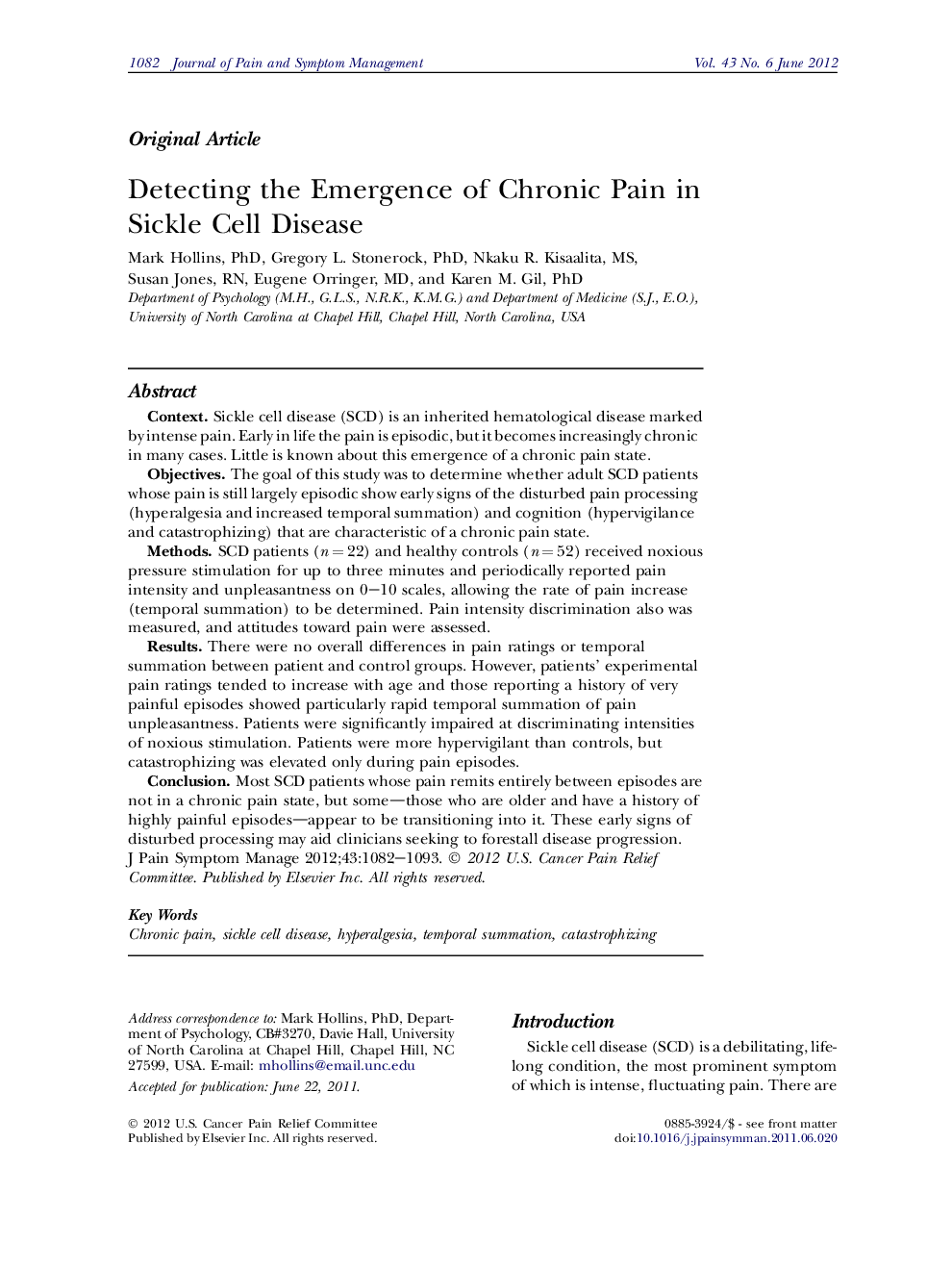| Article ID | Journal | Published Year | Pages | File Type |
|---|---|---|---|---|
| 2729814 | Journal of Pain and Symptom Management | 2012 | 12 Pages |
ContextSickle cell disease (SCD) is an inherited hematological disease marked by intense pain. Early in life the pain is episodic, but it becomes increasingly chronic in many cases. Little is known about this emergence of a chronic pain state.ObjectivesThe goal of this study was to determine whether adult SCD patients whose pain is still largely episodic show early signs of the disturbed pain processing (hyperalgesia and increased temporal summation) and cognition (hypervigilance and catastrophizing) that are characteristic of a chronic pain state.MethodsSCD patients (n = 22) and healthy controls (n = 52) received noxious pressure stimulation for up to three minutes and periodically reported pain intensity and unpleasantness on 0–10 scales, allowing the rate of pain increase (temporal summation) to be determined. Pain intensity discrimination also was measured, and attitudes toward pain were assessed.ResultsThere were no overall differences in pain ratings or temporal summation between patient and control groups. However, patients’ experimental pain ratings tended to increase with age and those reporting a history of very painful episodes showed particularly rapid temporal summation of pain unpleasantness. Patients were significantly impaired at discriminating intensities of noxious stimulation. Patients were more hypervigilant than controls, but catastrophizing was elevated only during pain episodes.ConclusionMost SCD patients whose pain remits entirely between episodes are not in a chronic pain state, but some—those who are older and have a history of highly painful episodes—appear to be transitioning into it. These early signs of disturbed processing may aid clinicians seeking to forestall disease progression.
